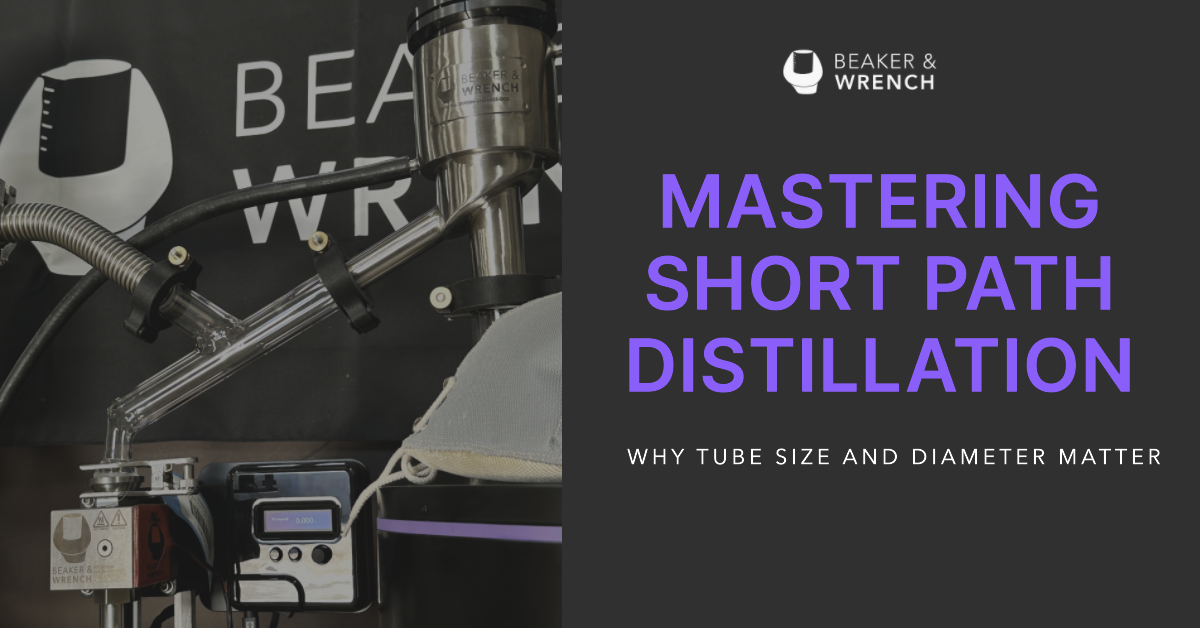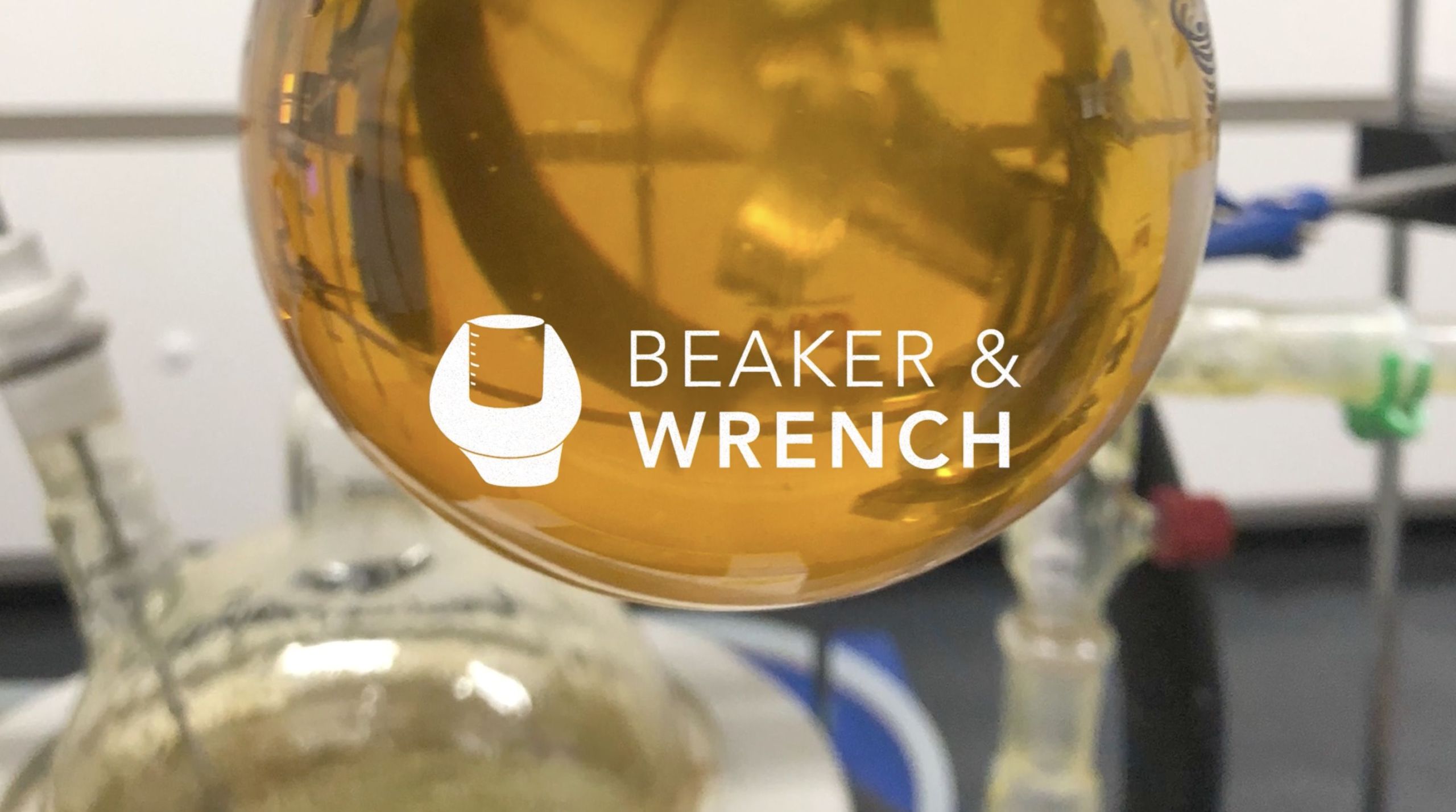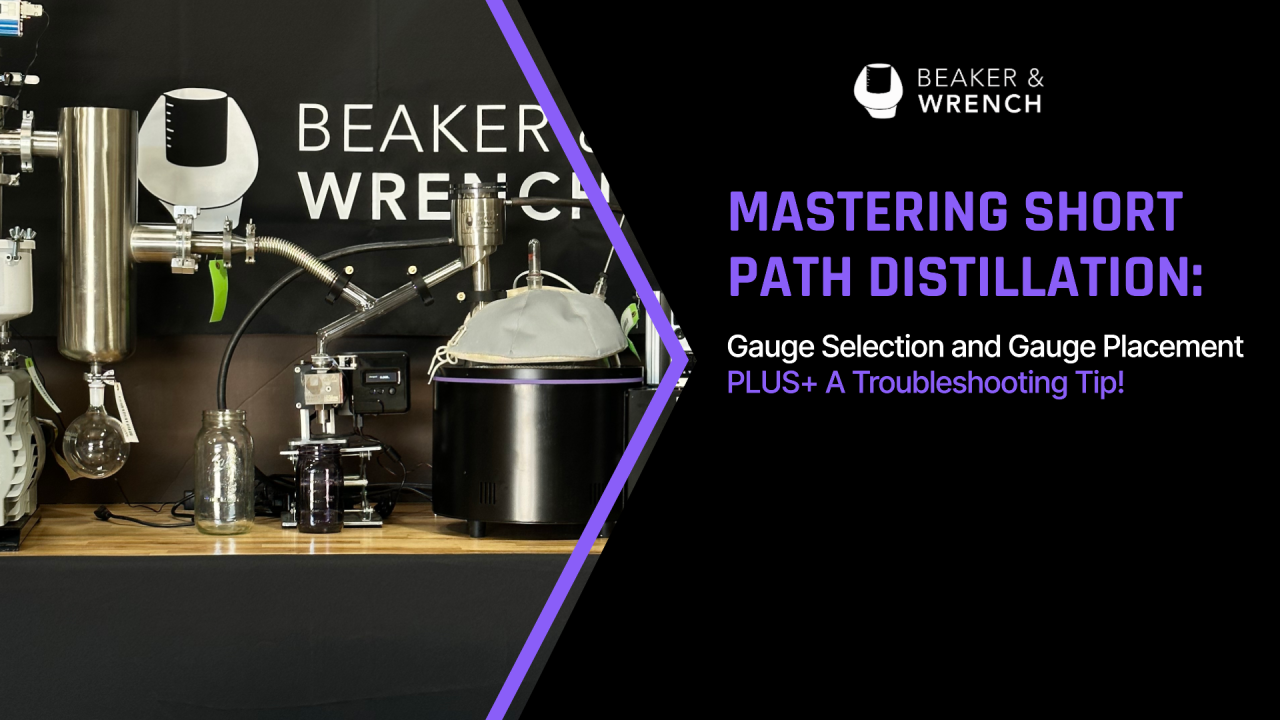| I want to start off by talking about something that’s key to mastering short path distillation: the size and diameter of the tubes on your short path. To explain why, let’s dive into two different types of flow regimes. One is a viscous flow regime, and the other is a molecular flow regime. Bear with me; it’ll all come together.
For the viscous flow regime, I want you to imagine a hallway packed with ping pong balls. The hallway represents a tube, and the ping pong balls are molecules. (This is very important to remember!) Still with me? Okay, let’s move on. In a viscous flow regime, all the ping pong balls are so crammed that the majority of them are only touching other ping pong balls. Now, once you open the door to the hallway, naturally, all the ping pong balls will flow out together, that’s a viscous flow regime, where molecules primarily interact with each other as they move. So, what’s a molecular flow regime? Let’s continue using the hallway and the ping pong balls analogy. Remember, the hallway is the tube, and the ping pong balls are the molecules flowing through it. Unlike the viscous flow regime, in a molecular flow regime, the hallway isn’t packed with ping pong balls. It’s quite the opposite—the hallway is almost empty. There are just a few ping pong balls bouncing around in limbo. These ping pong balls are mostly hitting the walls of the hallway since they have more room to move. Since the hallway isn’t crowded, when you open the door to let the ping pong balls out, it’s a lot harder to get them to bounce out. The ping pong balls don’t have anything to “push” them out the door, so only a few will leave the room randomly. This is called random motion. Relying on random motion makes it much more challenging to get the ping pong balls out of the hallway.
So, what does this have to do with short-path distillation? In short-path distillation, if you have a good vacuum, then you’re working within a molecular flow regime. Since it’s harder to push the molecules (ping pong balls) through the tube (the hallway), due to their reliance on random motion, the best thing to do is shorten the length of your pipe and increase the diameter. (Think of it as creating a shorter, wider hallway with a bigger door.) This small adjustment minimizes the effort required for the ping pong balls to leave the hallway, dramatically improving your distillation process. By optimizing the pathway for molecular flow, you can make your short path distillation process more efficient. In the next article, I will discuss why the placement of your gauge on your short path is important. If you have any questions about how to apply these principles to your setup, feel free to reach out! info@beakerandwrench.com |




Leave a comment
All comments are moderated before being published.
This site is protected by hCaptcha and the hCaptcha Privacy Policy and Terms of Service apply.